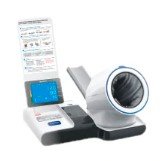Proper Sample Storage Guidelines for Medical Laboratories: Ensuring Accuracy and Quality Control
Summary
- Proper sample storage is crucial for maintaining the integrity of specimens in a medical laboratory setting.
- Specific guidelines and procedures must be followed to ensure accurate Test Results and patient care.
- By implementing proper sample storage practices, healthcare professionals can help prevent errors and maintain Quality Control.
Introduction
In a medical laboratory setting, proper sample storage is essential for maintaining the integrity of specimens and ensuring accurate Test Results. By following specific guidelines and procedures, healthcare professionals can help prevent errors and ensure Quality Control in the lab.
Importance of Proper Sample Storage
Proper sample storage is critical for maintaining the integrity of specimens and ensuring accurate Test Results. When samples are not stored correctly, there is a risk of contamination, degradation, or mislabeling, which can lead to inaccurate results and compromised patient care. By following specific guidelines and procedures for sample storage, healthcare professionals can help prevent errors and maintain Quality Control in the lab.
Guidelines for Proper Sample Storage
- Labeling: Properly label all sample containers with the patient's name, date of birth, and medical record number to ensure accurate identification.
- Temperature control: Store samples at the appropriate temperature, whether refrigerated, frozen, or room temperature, as specified by the test requirements.
- Security: Ensure samples are stored securely to prevent unauthorized access, tampering, or loss.
- Documentation: Keep detailed records of sample storage, including date and time of collection, handling procedures, and any deviations from standard protocols.
Procedures for Proper Sample Storage
- Refrigeration: Samples that require refrigeration should be stored at the appropriate temperature (usually between 2-8 degrees Celsius) to prevent degradation.
- Freezing: Samples that require freezing should be stored at the appropriate temperature (usually below -20 degrees Celsius) to maintain stability.
- Room temperature: Samples that can be stored at room temperature should be kept away from direct sunlight and extreme temperatures to prevent contamination.
Consequences of Improper Sample Storage
Failure to properly store samples in a medical laboratory setting can have serious consequences, including:
- Contamination: Improper storage can lead to contamination of samples, compromising Test Results and patient care.
- Degradation: Samples that are not stored at the correct temperature can degrade over time, leading to inaccurate Test Results.
- Mislabeling: Inadequate labeling of samples can result in misidentification and errors in patient care.
Conclusion
Proper sample storage is essential for maintaining the integrity of specimens in a medical laboratory setting. By following specific guidelines and procedures for sample storage, healthcare professionals can help prevent errors and ensure Quality Control in the lab. Implementing proper sample storage practices is crucial for accurate Test Results and optimal patient care.

Disclaimer: The content provided on this blog is for informational purposes only, reflecting the personal opinions and insights of the author(s) on the topics. The information provided should not be used for diagnosing or treating a health problem or disease, and those seeking personal medical advice should consult with a licensed physician. Always seek the advice of your doctor or other qualified health provider regarding a medical condition. Never disregard professional medical advice or delay in seeking it because of something you have read on this website. If you think you may have a medical emergency, call 911 or go to the nearest emergency room immediately. No physician-patient relationship is created by this web site or its use. No contributors to this web site make any representations, express or implied, with respect to the information provided herein or to its use. While we strive to share accurate and up-to-date information, we cannot guarantee the completeness, reliability, or accuracy of the content. The blog may also include links to external websites and resources for the convenience of our readers. Please note that linking to other sites does not imply endorsement of their content, practices, or services by us. Readers should use their discretion and judgment while exploring any external links and resources mentioned on this blog.
